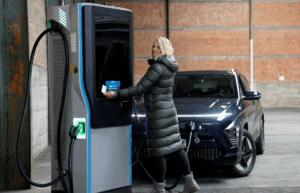As electric vehicle (EV) adoption surges, commercial property owners face a critical decision: how to integrate EV charging stations into their infrastructure effectively. This move not only enhances property value but also supports sustainability initiatives and attracts environmentally conscious tenants and customers. In this article, Nick Zamanov, an industry expert and representative of CyberSwitching, shares key insights and best practices for seamlessly incorporating EV charging infrastructure into commercial spaces.
1. Assessing Site Feasibility and Infrastructure Readiness
Before investing in EV charging stations, conduct a thorough site assessment. This includes:
- Evaluating available electrical capacity and identifying potential upgrades.
- Assessing parking layouts to determine optimal charger placement.
- Understanding zoning regulations and local permitting requirements.
A professional energy audit can help property owners identify the most cost-effective and efficient installation strategy.
2. Choosing the Right Type of EV Chargers
Not all EV chargers are the same. Depending on your property type and user base, consider the following options:
- Level 1 Chargers: Basic charging for long-term parking.
- Level 2 Chargers: Ideal for multifamily buildings, offices, hotels, municipalities, light duty fleet charging, hospitals, campgrounds, and public parking areas, providing a faster charge within a few hours.
- DC Fast Chargers: Suitable for high-traffic locations like shopping centers, fleet hubs, and transit stations where drivers require rapid charging.
Selecting the right charger type ensures efficiency and meets the specific needs of users.
3. Implementing Smart Energy Management
Integrating EV chargers can increase electricity demand, so managing energy efficiently is crucial. CyberSwitching’s intelligent power management solutions help balance energy loads, prevent grid overload, and reduce electricity costs through:
- Load management software to optimize power distribution.
- Dynamic charging schedules to distribute electricity based on demand.
- Submetering solutions to monitor usage and allocate costs accurately.
4. Ensuring Compliance with Incentives and Regulations
Many governments and utilities offer grants, tax incentives, and rebates for EV charging installations. Research federal, state, and local programs that can offset installation costs. Additionally, compliance with building codes, ADA accessibility guidelines, and safety regulations is essential.
5. Future-Proofing Your EV Charging Infrastructure
EV adoption is accelerating, and infrastructure needs will evolve. When installing EV chargers, consider:
- Scalability: Plan for future expansion as demand grows.
- Networked Charging Stations: Enable remote monitoring, payment processing, and data analytics.
- Renewable Integration: Explore options for solar-powered EV charging to enhance sustainability.
Conclusion
Integrating EV charging stations into commercial properties is no longer just an amenity—it’s a necessity. By following best practices in site assessment, charger selection, energy management, compliance, and scalability, commercial property owners can create a future-ready infrastructure that benefits both businesses and EV drivers.
At CyberSwitching, we specialize in intelligent power management solutions that make EV charging integration seamless and cost-effective. Contact us to learn how our technology can optimize your property’s EV infrastructure.
Questions & Answers About Integrating EV Charging in Commercial Properties
- Why should commercial property owners invest in EV charging stations?
Investing in EV charging stations increases property value, attracts eco-conscious tenants and customers, and aligns with sustainability goals. Additionally, government incentives and rebates can help offset installation costs.
- What type of EV chargers are best for commercial properties?
The choice depends on user needs:
- Level 2: Ideal for multifamily, workplaces, hotels, municipalities and public parking.
- DC Fast Chargers: Best for high-traffic locations where drivers need rapid charging.
- How can businesses manage energy consumption when installing EV chargers?
Using smart energy management solutions, such as load balancing, dynamic scheduling, and submetering, ensures efficient electricity use and prevents grid overload while reducing operational costs.
- Are there incentives available for installing EV chargers?
Yes, many local, state, and federal programs offer grants, tax credits, and rebates for EV infrastructure installation. Researching available incentives can significantly lower upfront costs.
- How can commercial properties future-proof their EV charging infrastructure?
Planning for scalability, investing in networked chargers, and considering renewable energy integration (such as solar-powered charging stations) ensures long-term adaptability as EV adoption grows.

